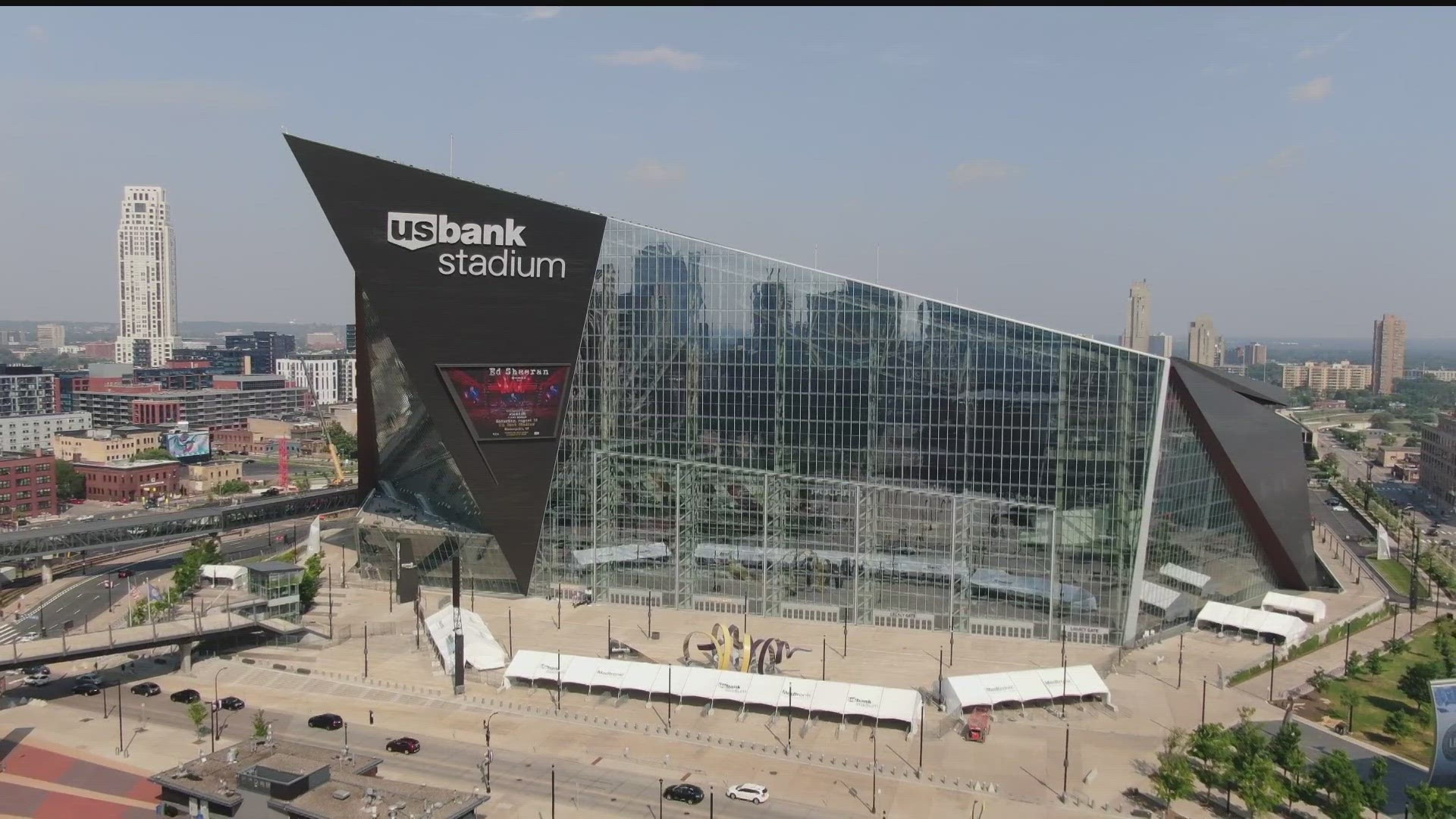MINNEAPOLIS — The office of Minnesota Management and Budget announced Monday that the state has officially paid off $377 million in bond debt for U.S. Bank Stadium, a full 20 years earlier than anticipated.
Commissioner Jim Schowalter said paying off the debt will save taxpayers $226 million in interest. Meanwhile, a spokesperson for the city of Minneapolis said the deal, combined with a change to the sales tax formula, will save taxpayers roughly $350 million through the year 2046.
The state legislature approved the funding to pay off the debt this spring. Lawmakers had some flexibility because the main revenue source for the stadium -- electronic pull tabs -- brought in money a lot faster than expected.
"State bonding helped take the stadium project from dream to reality," Schowalter said in a news release. "We are fortunate to be able to pay off the debt 20 years early and to have one of the greatest stadiums in the nation here in Minnesota."
Since opening in 2016, U.S. Bank Stadium has drawn nearly eight million visitors to more than 1,000 events, according to the Minnesota Sports Facilities Authority. The facility has hosted not only the Vikings, but also a Super Bowl, a men's Final Four, and most recently, two sold-out Taylor Swift shows this weekend.
U.S. Bank Stadium ultimately cost more than one billion dollars, nearly half of which came from public funding sources.
"I think the stadium worked out pretty well," said R.T. Rybak, the former mayor of Minneapolis who helped steer the city through negotiations for the stadium. "Whether people agree with the stadium being built or not, I think it was better to have two nights of Taylor Swift selling out, and now have millions coming back to the city, than to have a vacant Metrodome."
In a statement, the Minnesota Vikings said the state's debt payment "is great news and the latest chapter in a success story that has benefited Vikings fans, the City of Minneapolis and the State of Minnesota."
"It is a significant accomplishment that the Vikings have been advocating for several years," the team said. "We look forward to continuing to work in partnership with the governor and state legislative leaders to address U.S. Bank Stadium's long-term capital needs. It is imperative that we protect this amazing community asset into the future."
Arthur Rolnick, a University of Minnesota associate economist and longtime critic of public funding for sports stadiums said he had mixed feelings about the state's announcement.
"It's good we're paying off the debt. It's good for a number of reasons why we have the Vikings in town. But I would like the public to be asking several questions. Why does the public have to pay for a stadium owned by a private business?" Rolnick said. "If I could, I would outlaw this kind of blackmail. We wouldn't be having these kind of discussions -- we'd be using public money in the public sector and not subsidizing private businesses."
U.S. Bank Stadium will still require millions of dollars in operating costs moving forward.
This session, the state legislature also approved money for the first phase of a security fence going up around the stadium.
"The Minnesota Sports Facilities Authority is thankful for the appropriation of $15.7 million in funding to support phase one of the stadium's secured perimeter project as a result of the recent legislative session," Minnesota Sports Facilities Authority Chair Michael Vekich said in a statement. "As stewards of this facility, we look forward to further discussions with the Governor and legislative leaders to review and plan for ongoing needs in effort to maintain and preserve U.S. Bank Stadium as a world-class venue."

